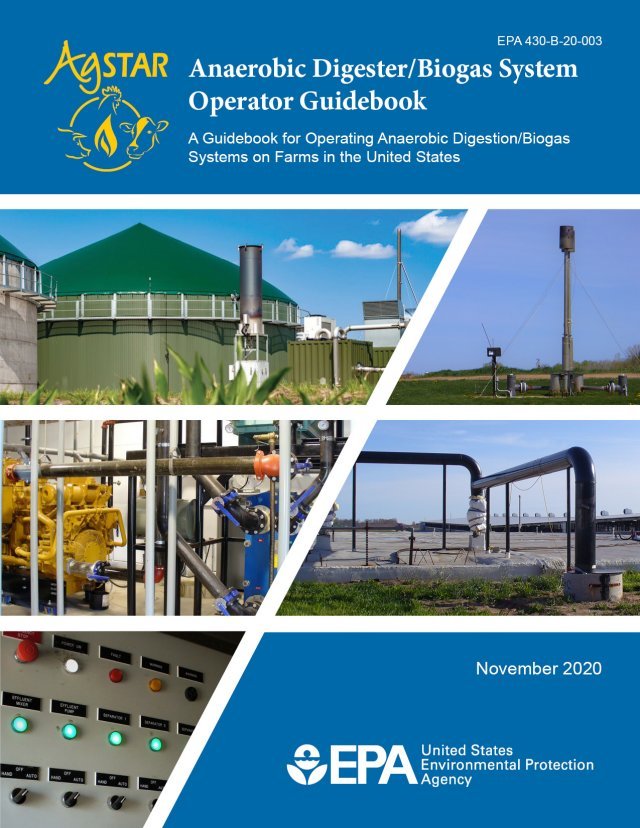Waste to Bitcoin: Step by Step
/The previous article on using cow waste to mine bitcoin generated plenty of interest and even excitement. So, I thought it might be good to drill down a little bit on this very interesting topic.
Big caveat: I have not designed – let alone built and operated – one of these facilities. So what follows is somewhat speculative, and very amateurish. Even so, my hope is that experts will step in with comments, suggestions and corrections in order to make this more accurate and useful. I ask the experts to please forgive me where I have misspoken, or poorly spoken! But with that, here is my amateur step-by-step guide on using cow waste to mine bitcoin!
1. Conduct research on biogas production and its application to generate electricity. Read literature on anaerobic digestion and biogas generation, and study the various components of a biogas plant.
Here are some good resources in that regard:
“Anaerobic Digestion Basics” by the US Environmental Protection Agency;
“Small-scale Electricity Generation from Biomass Part I: Biomass Gasification” by the Food and Agriculture Organization of the United Nations.
2. Conduct a site survey and assess the feasibility of building a small biogas plant. Factors such as available space, access to feed stock (source of cow manure), and proximity to the power grid (to operate the digester and associated equipment) should be considered.
It would seem that feed lots, for example, in the Texas Panhandle, would be a good site to assess for feasibility. Obviously, you will need to appropriately contract with the site location/feedstock provider.
3. Develop a biogas plant design that includes an anaerobic digester, gas storage, gas cleaning, and a generator. The digester should be designed to optimize biogas production from cow excrement. Gas storage should be large enough to accommodate the biogas produced, and the generator should be selected based on the required electricity output.
Here are some resources on plant design:
“Biogas Handbook” by David House;
“Biogas: Technology and Principles” by Dieter Deublein and Angelika Steinhauser;
“Biogas from Waste and Renewable Resources” edited by D. Deublein and A. Steinhauser.
4. Acquire the necessary permits and approvals for the construction of the biogas plant.
Consult with local authorities and comply with all regulations governing the construction of the plant.
In Texas, this would be county and municipal authorities, but perhaps also the State of Texas. An air quality permit might be required, depending on the size of the biogas plant, the capacity of the generator, and the potential emissions of the operation. In Texas, the permitting agency is the Texas Commission on Environmental Quality (TCEQ).
5. Construct the biogas plant according to the design. Install the digester, gas storage, gas cleaning, and generator components, and connect them as per the design.
6. Purchase and install your bitcoin mining rig (ASICs) compatible with the electricity output of the generator. Configure the mining rig to mine bitcoin. There are many experts who can help you source your containers and your machines, and can get your bitcoin mining operation up and running.
7. Collect and transport the manure to the digester. Before going into the digester (perhaps in the truck doing the transportation), the manure should be mixed with water to create a slurry to be pumped into the digester in the right ratio and according to the specific characteristics of the manure (I have learned that different cows in different locations can differ vastly in this regard!). Proper, steady feeding of the digester is critical.
8. Generate biogas and store the biogas in the storage component to flow to the generator.
9. Start the generator and convert the biogas into electricity and use the electricity produced to power the bitcoin mining rig!
10. Monitor the biogas plant performance and maintain the system. Regularly inspect the digester for leaks and check gas quality. Regularly service the generator and the mining rig.
11. Securely store mined bitcoin in your private wallet. Have a system for utilizing your private keys.
12. Recommendation: Sell as much bitcoin as necessary on the spot market to cover your operating costs and to get a reasonable ROI on the CAPEX you have invested for this project. If you are successful in controlling costs such that you can do this, then your project has long-term viability. If you don’t do this, your project may quickly become unsustainable. Bitcoin price has been known to swing wildly from time to time...
So that’s my amateur guide to getting a project like this done!
Each of the points above could be elaborated upon, and perhaps in future articles, we will do so.
But till then, I invite experts weigh in to advance this conversation! Let’s get these projects going!




